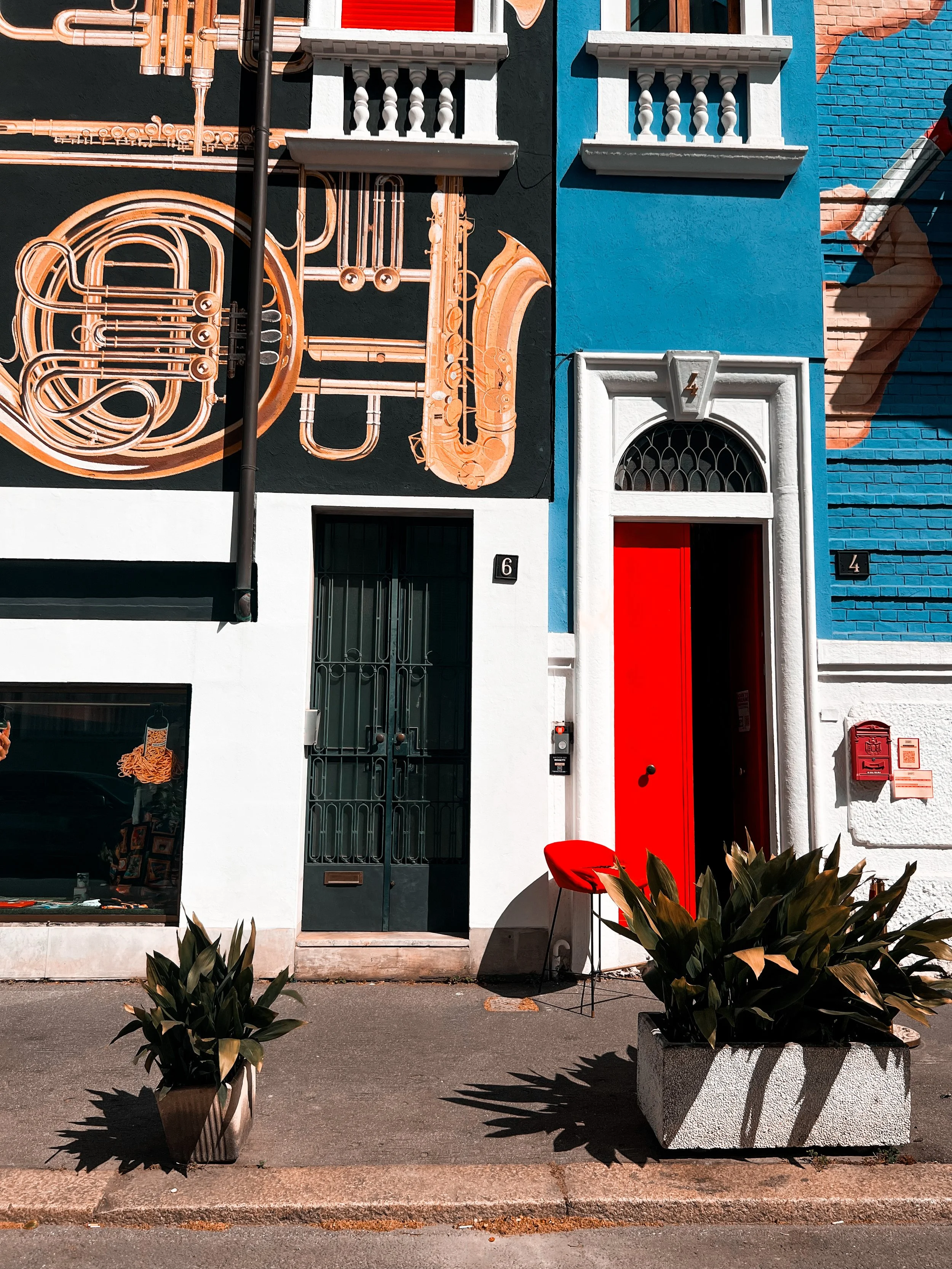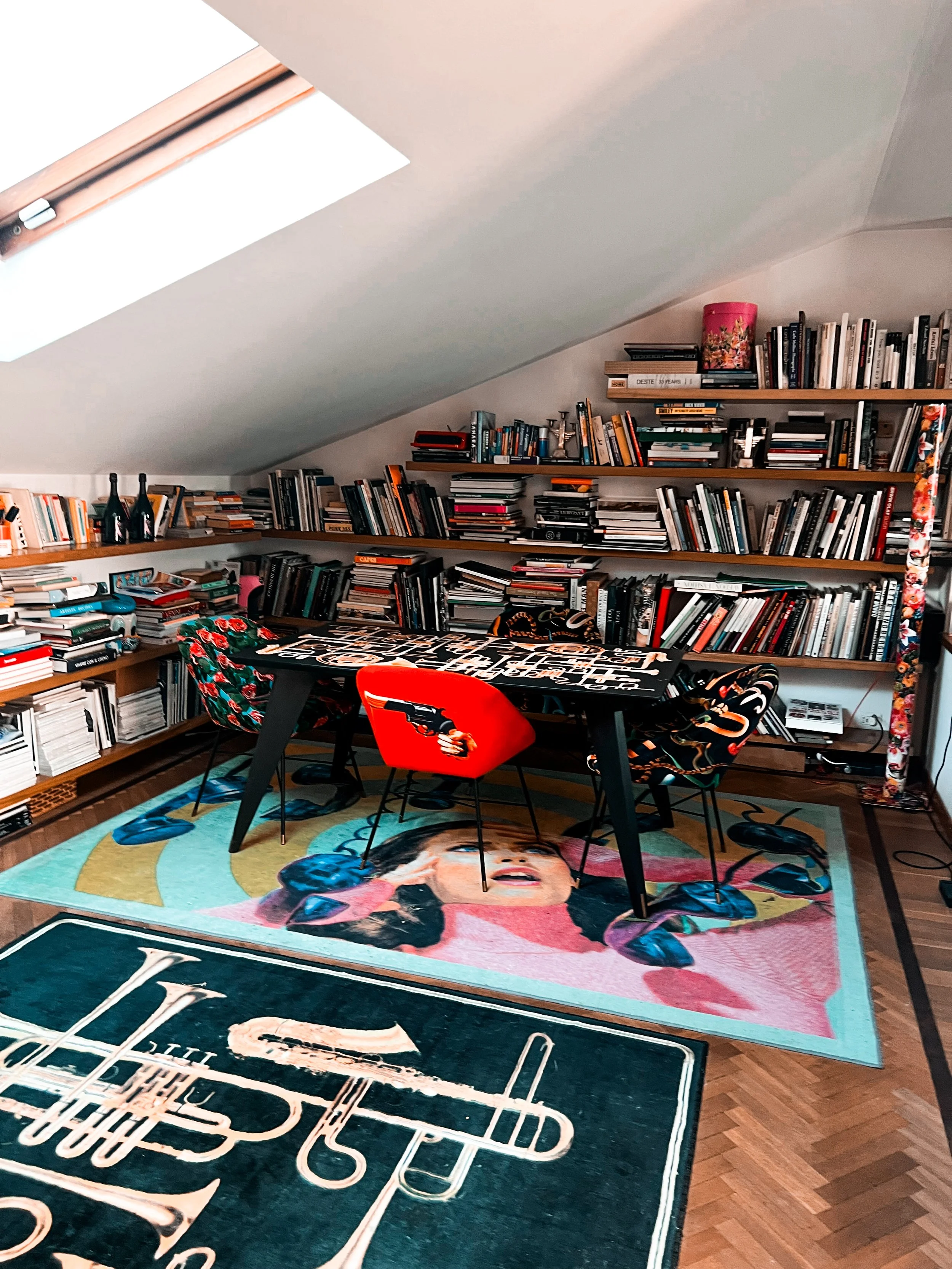A surreal visit to Toiletpaper Magazine Headquarter
If you’ve come to Milan for Design Week and feel like your brain is overloaded with clean lines and conceptual chairs, this is the place for you, the headquarters of Toiletpaper Magazine.
Via Giuseppe Balzaretti 4, Milan
Thanks to my friend Bella, who always finds the most unexpected places in Milan. This time she suggested “Let’s go to the Toiletpaper editorial office”. I was surprised: “What, is that possible?” It turned out that it was very possible. Especially during Design Week, when the editorial office opens its doors to everyone.
This is the actual workplace of the editorial office. But at the same time, it is a total installation, performance, and playroom for adults who grew up on glossy magazines and internet memes. From the outside, it’s a bright remarkable building on Via Balzaretti. Once you step inside, you find yourself in the surreal universe of Maurizio Cattelan and Pierpaolo Ferrari.
Crazy interior
Every inch here is a photograph. From floor to ceiling, including furniture, carpets, and toilets, everything is designed in the provocative, ironic, and absurdly glossy style of Toiletpaper. You are not only allowed to touch, sit, open, and interact with objects, you are encouraged to do so. You can lie on a bed, sit in a lip chair, or spin around in a room whose walls are covered with their famous eye pattern.
Yeah, go ahead and grab your phone. You’ll want to take pictures here non-stop. Every corner is a ready-made photo location. This place was born for Instagram, but it still retains an aura of artistic value.
Shop
Here you can buy magazines, books, limited edition collaborations, and branded merchandise that will become your personal piece of this madness.
Facts about the Toiletpaper Magazine universe
The Eye Carpet
One of the brand’s most recognizable symbols. This hypnotic eye pattern is a direct reference to surrealism, in particular to Luis Buñuel's film Un Chien Andalou (1929), where in one of the most shocking scenes, an eye is cut open with a razor. Toiletpaper transforms this shock into a glossy, mesmerizing image, causing the viewer to feel both admiration and slight discomfort.
The eye symbolizes the all-seeing eye of pop culture, consumerism, and the viewer themselves, who endlessly “devours” images. You literally walk on it, becoming part of the system that the magazine both criticizes and represents.
Bocca Lips Sofa
The famous lip-shaped armchair that often appears in their shoots. But it's not their original design! The Bocca chair was created in 1970 by Studio 65 and inspired by the surreal lips of actress Mae West, which Salvador Dali depicted in his work “The Face of Mae West (used as a surreal room)” (1934-35).
Toiletpaper loves such redesigns and appropriations. They take an already iconic pop art object and place it in their own context, stripping it of its original glamour and adding their own share of kitsch and absurdity. It\s a game with the history of design and art.
No Words Philosophy
In Toiletpaper magazine, you won’t find a single article, interview, or caption. Only images. This was a conscious manifesto by the founders — artist Maurizio Cattelan and photographer Pierpaolo Ferrari.
They believe that in the digital age, images have become a universal language that everyone understands. By removing text, they force the viewer to confront a pure, unfiltered image that provokes their own interpretation, without imposing meaning.
The name “Toiletpaper”
Shocking. PROVOCATIVE. It symbolizes something disposable, quickly consumed and discarded, which is largely what modern media and consumer culture is.
Their art is a mirror that they hold up to the currents of this culture. The images in the magazine are bright and attractive, but often carry a hint of something disturbing, disposable, and excessive, just like the glossy magazine itself.
Connection with the Seletti brand
Many of Toiletpaper’s images have become real design objects thanks to a collaboration with the Italian brand Seletti. You can eat from a plate with a fly in your food or drink from their iconic mug and feel conneted to the legendary Toiletpaper.
This is the special form of their irony. First, they create an image that criticizes consumption but then launch it into mass production as a commodity. This blurs the line between art, criticism, and commerce, like everything Toiletpaper does.
Visit their headquarter if you get a chance.








